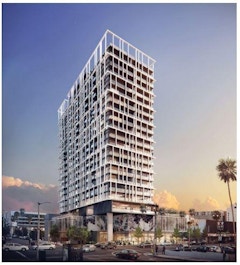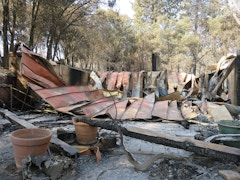
103 results
-

-

The Facade and Energy Codes
- Paper by Elliot Glassman
Ever-increasing performance requirements in the latest version of the energy codes are compelling project teams to consider the thermal performance
-

-
Integrated Energy Analysis
- Paper by Greg Verabian · Saurabh Shrestha · Laure Michelon
Energy codes across the country are progressively getting stricter and increasing the threshold for a baseline building’s energy performance.
-
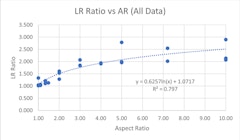
Fixed Edge Supports
- Paper by James G. Soules, Ph.D., P.E., S.E., P.Eng., SECB, F.SEI, F.ASCE · Stephen M. Morse, Ph.D., P.E., M.ASCE · Scott H. Norville, P.E., Ph.D.
Model building codes and standards in the United States use a probabilistic model to define glass load resistance (LR). In general, these model
-

Pioneering the Structural Terracotta Mullion Façade
- Paper by Victoria Ereskina · John Neary
Architects today must explore alternative enclosure materials to meet evolving energy codes and embodied carbon regulations. Terra cotta has been
-

Thermal Bridging and Building Facades
- Paper by Ivan Lee
Thermal bridging through building façades have been overlooked by designers and building energy codes and standards in the past, which has led to
-

Environmental Facade Perspective
- Paper by Patricia Shaw, M Arch., MSc Facade Engineering
Designing a sustainable rainscreen wall assembly has become an essential part of most new construction projects. Industry principles and energy codes
-

Energy conservation code updates promise to reshape the way facades are designed
- Article by Elliot Glassman
Ever-increasing performance requirements in the latest version of the energy codes are compelling project teams to consider the thermal performance of the building envelope more rigorously than ever before.
-

Thermal bridging: The missing key to low energy building design
- Article by Ivan Lee
Thermal bridging through building facades have been overlooked or over-simplified by designers and building energy codes and standards in the past, which has led to higher space heating and cooling loads, occupant discomfort, and higher risk of condensation.
-

Designing with Photovoltaics
- Paper by Wayne Walker · Julia Ragragio Ruiz, LEED AP BD+C · Sam Crawford
Photovoltaics (PV) have been utilized in buildings for decades, especially in Europe where legislative support has largely driven the market. With
-
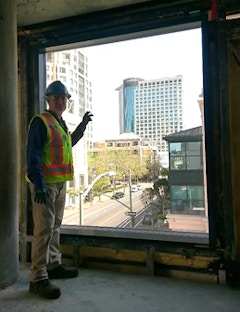
Infinite Panel System
- Paper by Mike Ryan · Brian Stern · Michael Adams
Today, building facades are expected to do much more than merely provide shelter, which is driving the need for higher performing envelope solutions.
-
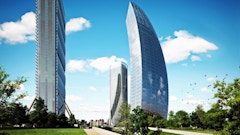
Fire Safety Facade Design
- Paper by Rigone Paolo · Mazzucchelli Enrico Sergio · De la Fuente Ceja Blanca Judith
Nowadays the construction industry is characterised by high multifunctional and complex buildings with innovative facade systems. Unlike a simple
-
The Scope of the Structural Glass Design Manual
- Paper by Richard Green SE PE P.Eng CPEng · Andrew Crosby P.Eng LEED® AP BD+C · Terrence McDonnell SE SECB PE P.Eng
The technology of glass now allows glass to be fabricated in sizes and structural configurations not previously conceivable. The standards and codes
-

The Butterfly
- Paper by Venelin Kokalov, Design Principal Shinobu Homma, Architect AIBC, AAA, MRAIC, Technical Principal Amirali Javidan, Associate Director Zhuoli Yang, AIA, NCARB, LEED AP BD+C, Architect
Providing a unique and integral cladding/envelope solution suited for high-rise buildings has been an inherent challenge for this building typology… -

The Passive House Network - Fenestration Focus
- Event by The Passive House Network
The Passive House Standard has driven a global shift in the performance expectations of what a fenestration system can and should provide, and as demand grows is transforming fenestration manufacturing from Ireland to China.
-

Facade Mock-ups
- Paper by Andy Lang, AScT
Curtain walls and window walls are typically specified to meet a variety of different performance and testing criteria, some of which can be quite
-
Rammed Earth & Wildfire
- Paper by Brittany Dhawan, AIA
California is set to be drier and more drought prone with climate change. Wildfire and the subsequent loss of life and housing is a huge challenge.
-

-

Finally
- Paper by Michael Mulhern
For over 60 years architects, engineers, and consultants have been specifying stainless steels for use in building skins and in some structural
